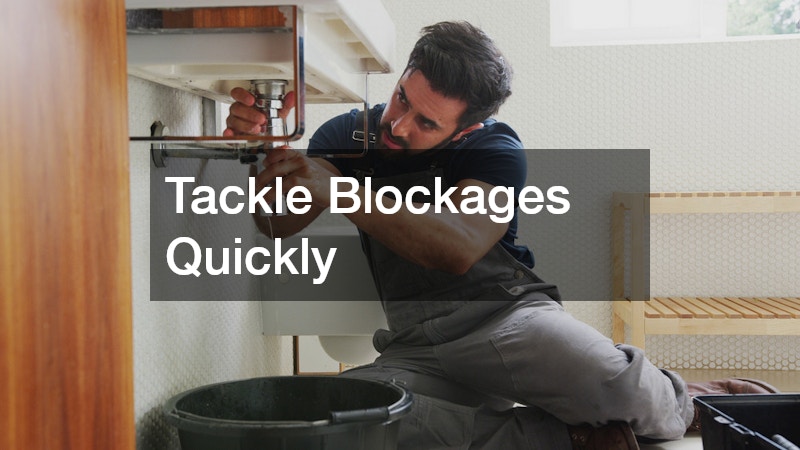
Maintaining a home doesn’t have to drain your wallet. With thoughtful planning, smart decision-making, and a few creative strategies, homeowners can protect their investment, keep their property in good condition, and save money in the long run. Budget-friendly home upkeep focuses on preventive care, DIY solutions, and strategic investments that reduce costly repairs while improving functionality and comfort.
In this guide, we’ll explore practical strategies that address common home maintenance needs, from roofing and plumbing to cleaning, energy efficiency, and repurposing household materials. Each section will include actionable tips that homeowners can implement immediately to stretch their budget without compromising quality or safety.
Protect Your Roof Without Overspending

A well-maintained roof is essential to protect your home from weather damage and energy loss. While a full metal roofing replacement may seem costly, there are ways to preserve your roof’s lifespan and avoid expensive repairs.
Regular inspections can identify loose panels, rust spots, or minor leaks before they escalate. Cleaning debris, clearing gutters, and checking for corrosion helps prevent water damage and structural issues. Additionally, applying protective coatings or sealants can extend the life of metal roofing at a fraction of the cost of replacement.
DIY maintenance, combined with professional inspections every few years, can save homeowners hundreds, if not thousands, of dollars. By investing in preventive care, you maintain the safety and efficiency of your roof without the immediate expense of a full replacement.
Keep Your Pipes Flowing Efficiently
Plumbing problems rank among the most common and costly household issues, but proactive maintenance can save homeowners both time and money. Regular inspections and timely interventions prevent minor issues from escalating into major repairs, which can be disruptive and expensive. Hiring a reliable plumbing service for routine maintenance—such as checking for leaks, inspecting pipes, testing water pressure, and cleaning fixtures—ensures that your home’s plumbing system remains in top condition. Professional maintenance also identifies hidden issues like corrosion, pipe blockages, or slow leaks that may not be immediately visible but could cause significant damage over time.
Homeowners can take additional preventative steps to safeguard their plumbing. Avoid pouring grease, coffee grounds, or fibrous food waste down drains, as these substances can accumulate and cause blockages. Installing strainers in sinks and shower drains helps catch debris and prevent clogs. Monitoring water usage for unusual spikes can indicate hidden leaks or pipe damage, enabling early detection and cost-effective repair.
Promptly addressing minor leaks or drips not only saves money on water bills but also protects the structural integrity of your home by preventing water damage, mold growth, and deterioration of walls or flooring. Educating all household members about proper plumbing habits and performing routine checks can extend the life of pipes, reduce emergency repairs, and keep your home running smoothly.
Choose Cost-Effective Building Supplies

When tackling home repairs or upgrades, carefully selecting building materials can have a significant impact on both budget and long-term durability. High-quality materials are important, but they don’t always have to come with a premium price tag. Reclaimed wood, recycled metal, and budget-friendly composite materials can perform just as well as brand-new, high-end options while significantly reducing costs. For instance, reclaimed wood can be used for shelving, flooring, or accent walls, giving your home a unique character while being eco-friendly and affordable.
Planning projects thoroughly before purchasing supplies is essential. Measure spaces accurately, create detailed material lists, and account for potential waste to avoid buying excess items. Comparing prices from multiple suppliers ensures you get the best value, and taking advantage of bulk purchases for recurring needs—such as nails, screws, paint, or insulation—can provide further savings. Seasonal sales and local surplus stores often carry discounted materials that are still high quality, making them ideal for budget-conscious homeowners.
Where feasible and safe, consider DIY installation to reduce labor costs. Tasks such as painting, tiling, or assembling shelving can be completed with proper guidance and basic tools, saving hundreds in professional fees. Combining careful planning, smart purchasing, and selective DIY work allows homeowners to complete projects efficiently while maintaining quality, ultimately keeping your home functional, beautiful, and budget-friendly.
Ensure Clean, Safe Water
Water quality is critical for both health and home maintenance. Installing a water purifier can prevent scale buildup in pipes, improve taste, and reduce the risk of waterborne illnesses. While high-end systems can be expensive, there are budget-friendly options that filter contaminants effectively.
Regularly cleaning or replacing filter cartridges ensures optimal performance and extends the lifespan of the system. By investing in an affordable water purifier, homeowners protect their plumbing infrastructure and improve daily living standards without excessive expenditure.
Tackle Blockages Quickly

Clogged drains are a frequent and frustrating household problem, but addressing them promptly can prevent more serious plumbing issues and costly repairs. Routine clogged drain cleaning is essential for maintaining smooth water flow and reducing the risk of backups. Safe, non-corrosive solutions, such as a mixture of baking soda and vinegar followed by hot water, can effectively dissolve minor blockages without damaging pipes.
Homeowners should also take preventive measures to reduce debris buildup. Regularly cleaning sink strainers, hair traps, and other catchment devices prevents food particles, hair, and other debris from accumulating in pipes. Avoid pouring grease, coffee grounds, or fibrous materials down drains, as these substances are common culprits for stubborn clogs.
For persistent or recurring issues, scheduling a professional inspection is a smart investment. A plumber can identify hidden problems, such as misaligned pipes, tree root intrusion, or corroded sections, which DIY methods cannot fully address. By combining preventative care, safe cleaning methods, and timely professional support, homeowners can maintain efficient plumbing and avoid expensive emergency repairs.
Make Recycling Work for Your Home
Incorporating recycling into everyday household routines is a practical way to save money while supporting sustainability. Beyond simply separating waste for curbside pickup, creative reuse and repurposing of materials can reduce the need for new purchases, extend the life of household items, and lower overall expenses. For example, cardboard boxes can be transformed into drawer organizers or storage containers, while glass jars can be repurposed for pantry storage, craft supplies, or even small indoor gardens. Plastic containers, with proper cleaning, can serve as reusable storage for leftovers or as planters for herbs and small plants.
Recycling can also extend to furniture and home décor. Old chairs or tables can be sanded, painted, and refurbished for new use. Leftover paint from past projects can be combined or used for arts and crafts, while fabric scraps can be sewn into cleaning cloths, reusable bags, or decorative items. Even small items, like tin cans, can be repurposed as pen holders or plant pots.
By integrating recycling and upcycling practices into home routines, homeowners not only save money but also reduce waste and foster a culture of sustainability. These efforts teach family members the value of resourcefulness, encourage creativity, and contribute to a greener, more environmentally responsible household. Over time, simple recycling habits accumulate into significant savings and a noticeable reduction in environmental impact, making them both practical and rewarding.
Keep Floors Clean Without Costly Products
Maintaining clean floors is an essential part of home upkeep, as it preserves the appearance, longevity, and safety of your surfaces. While many specialized cleaning products can be expensive, there are numerous affordable and effective alternatives for a variety of flooring types. For example, floor cleaning with a simple mixture of vinegar and water works well for tile and ceramic floors, effectively removing grime and disinfecting without leaving residue. Hardwood and laminate floors can be maintained using a mild soap solution, which avoids harsh chemicals that may damage finishes over time.
Routine care is key to keeping floors in top condition. Sweeping or vacuuming regularly removes dust, dirt, and debris that can scratch surfaces or accumulate in corners. Spot cleaning spills immediately prevents stains and sticky buildup, while periodic deep floor cleaning ensures long-term maintenance. Investing in reusable microfiber mops and cleaning pads reduces the need for disposable products, cutting costs while being environmentally friendly.
Clean floors also contribute to healthier indoor air quality by reducing allergens, dust, and bacteria. Encouraging all household members to remove shoes indoors, using rugs in high-traffic areas, and following a consistent floor cleaning schedule extends flooring life. By combining budget-friendly cleaning solutions with regular floor cleaning, homeowners can maintain beautiful, durable, and safe floors without overspending on expensive products.
Safely Manage Electrical Needs
Electrical issues can be both dangerous and costly. Engaging professional electrical services for inspections, minor repairs, or installation ensures safety while preventing expensive emergencies. Regular checks for faulty outlets, frayed wires, or overloaded circuits reduce fire risk and improve energy efficiency.
Homeowners can also implement small energy-saving habits, like replacing incandescent bulbs with LED lights, using smart power strips, and unplugging unused appliances. These actions reduce energy bills while maintaining electrical safety, proving that strategic maintenance and minor upgrades pay off in the long term.
Repurpose Household Waste
Everyday items like used cooking oil don’t need to be discarded after a single use. With a little creativity, these materials can be repurposed in ways that are both environmentally friendly and cost-effective. For example, used cooking oil can be transformed into biodiesel to fuel certain home heating systems, providing an alternative energy source and reducing utility costs. It can also serve as a natural lubricant for squeaky hinges, rusty tools, or stuck drawers, extending the life of household hardware without additional purchases.
Additionally, used cooking oil can be incorporated into composting for certain organic mixes, adding nutrients to soil while keeping waste out of landfills. Properly collecting and storing the oil in sealed, safe containers prevents plumbing and drainage issues that might otherwise arise from improper disposal.
By finding second uses for used cooking oil and other household waste, homeowners not only reduce environmental impact but also save money on cleaning products, lubricants, and energy resources. This strategy encourages sustainable living while supporting budget-conscious home upkeep.
Shop Smart for Home Essentials
Thrift shops are a treasure trove for homeowners looking to save money while maintaining and upgrading their homes. These stores offer a wide variety of affordable home furnishings, décor, and repair tools, often at a fraction of the retail price. Gently used items such as lamps, chairs, tables, shelves, and storage solutions can be repurposed or incorporated into your home without the high cost of buying new.
Shopping at thrift shops also sparks creativity. Many items can be upcycled or refurbished to match your style, whether it’s painting old furniture, reupholstering chairs, or transforming decorative objects into functional pieces. Even small projects, like sanding and staining a wooden table, can give second-hand items a fresh, modern look.
In addition, thrift shops provide access to second-hand tools, hardware, and materials for home maintenance tasks, reducing project costs significantly. By incorporating thrift shop finds into home upkeep, homeowners can stretch their budget, reduce waste, and create a stylish, functional living space without overspending.
Conclusion
Budget-friendly home upkeep is achievable with a combination of preventive care, smart purchasing, and creative solutions. Small investments in preventive maintenance, like regular roof inspections, plumbing checkups, and proper cleaning routines, save homeowners from costly emergencies down the line. Strategic choices in building materials, water purification, and electrical services reduce expenses while maintaining safety and efficiency.
Repurposing materials, recycling household items, and shopping at thrift stores add another layer of savings while promoting sustainability. From tackling clogged drains to managing used cooking oil and keeping floors clean, these strategies demonstrate that effective home upkeep does not require overspending.
By combining foresight, creativity, and consistent maintenance habits, homeowners can preserve their property, enhance comfort, and enjoy long-term financial savings. Implementing these simple, budget-friendly strategies ensures your home remains safe, functional, and beautiful, all while protecting your wallet and encouraging sustainable living.
